Next to Covent Garden is another garden, a rather greener pocket park next to St Paul’s Church, lined with a large number of park benches.

The church was built along with the rest of Covent Garden’s plaza as a development by the 4th Earl of Bedford, and although widely attributed to Inigo Jones, there is not much in the way of hard evidence proving the link.
The sits alongside Covent Garden, and many people assume, not unreasonably, that it would be the main entrance. It’s said to have been intended to be so, but they flipped the entrance around to the other side instead.
And that entrance is through a wide raised lawn, which is surprisingly well hidden unless you’re familiar with it already. It’s laid out as two lawns on either side of the main paved route to the church’s actual entrance, and the paving is lined almost the entire way with benches, reflecting how busy the pocket park can get on a warm day.
Not so much on a cold morning.
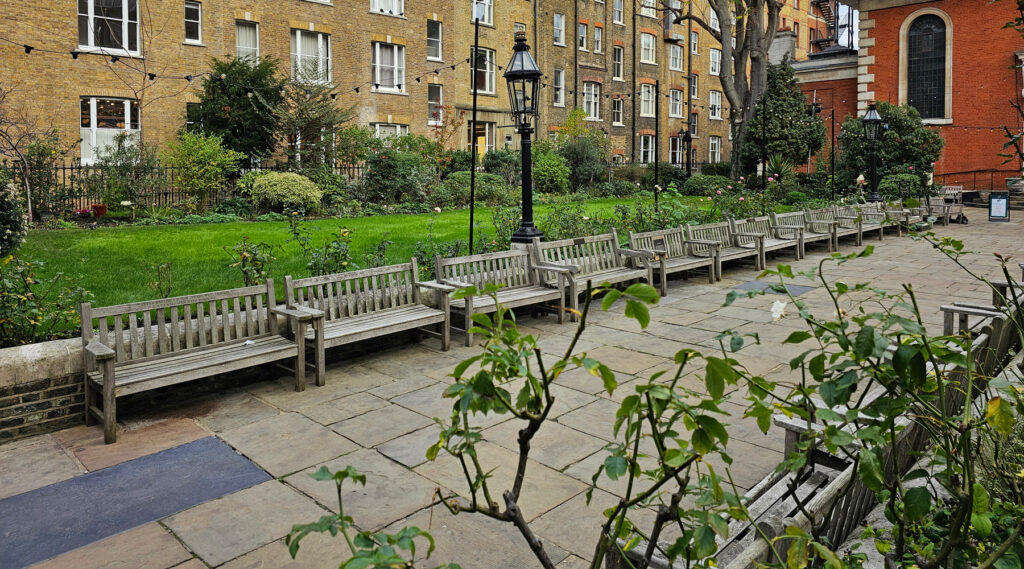
The church is nicknamed the Actors Church thanks to its close links with the local theatres, and you won’t be surprised to see that most of the benches are dedicated to a dead actor or theatre fan.
There’s also a more recent monument to the Covid pandemic.
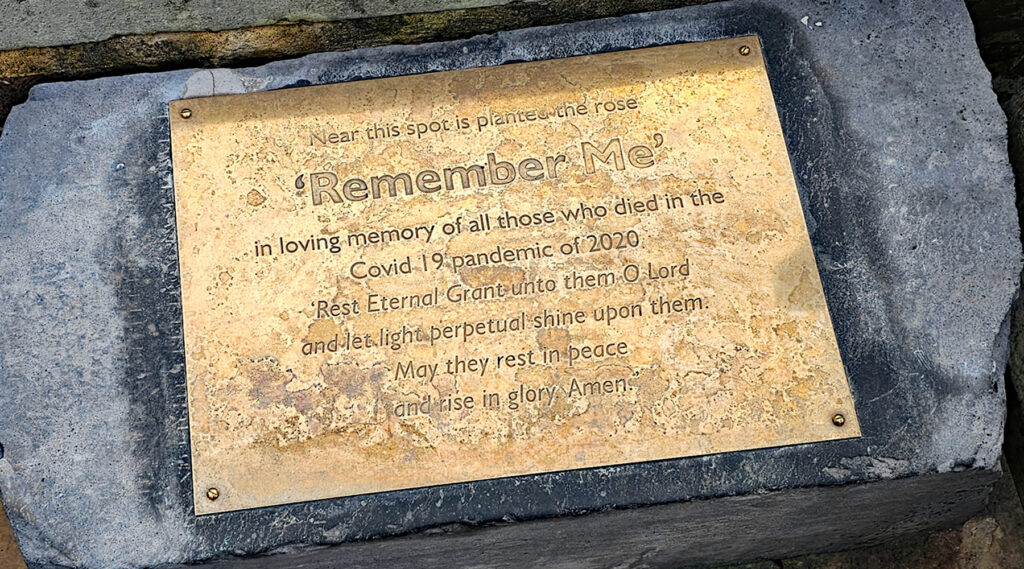
As it’s winter, one of the two lawns is closed to recover, but it’s a pleasant spot to relax in the summer. And do notice how the older lamps are still gas lit, which is probably less obvious during the summer months.
The lawns are, unsurprisingly for a church, a former graveyard, and the first known victim of the 1665–1666 outbreak of the Plague in England, Margaret Ponteous, was buried there on 12th April 1665.
Also buried here were the dramatist William Wycherley (d.1716), composer Thomas Arne (d.1778), the carver Grinling Gibbons (d.1721), artist Thomas Girtin (d.1802) and the poet Samuel Butler (d.1688).
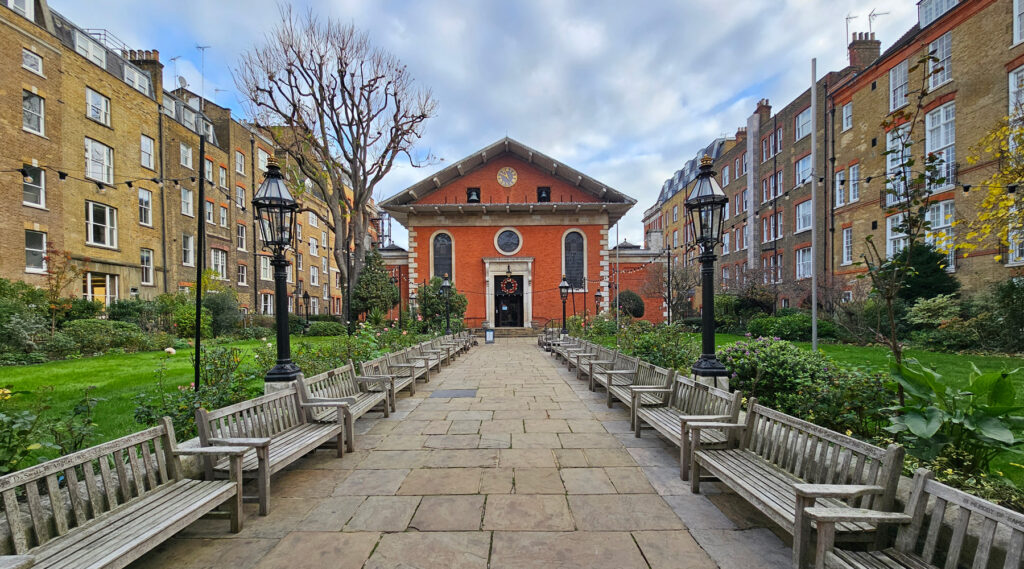
The last burial took place in 1850, and the churchyard was closed by Act of Parliament in 1852, along with most in central London. Most of the gravestones were removed fairly quickly so the space could be opened as a public park in 1882.
It’s been open ever since.
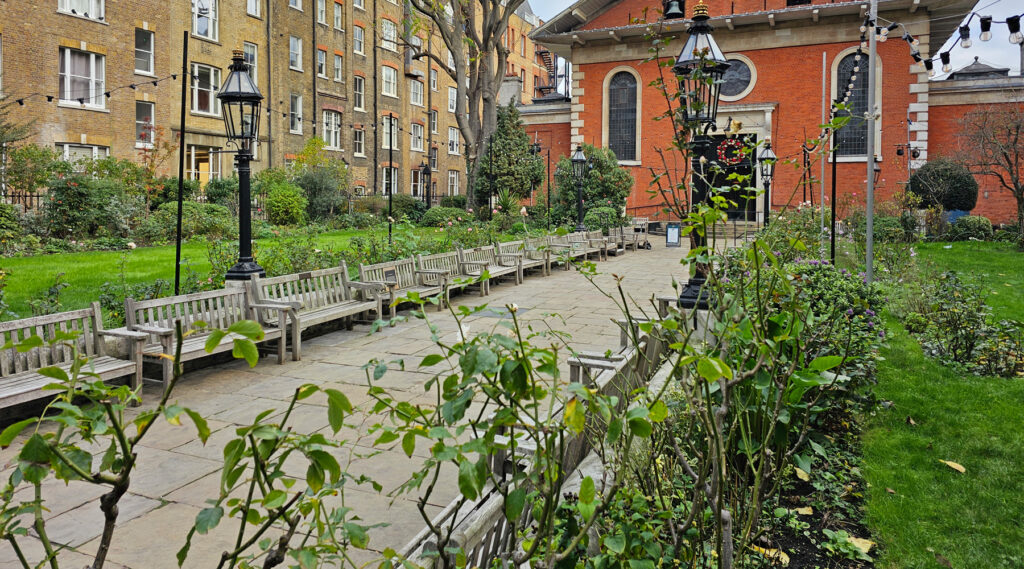
The main entrance is on Bedford Street, but there are two less obvious covered entrances on the north and south sides as well.

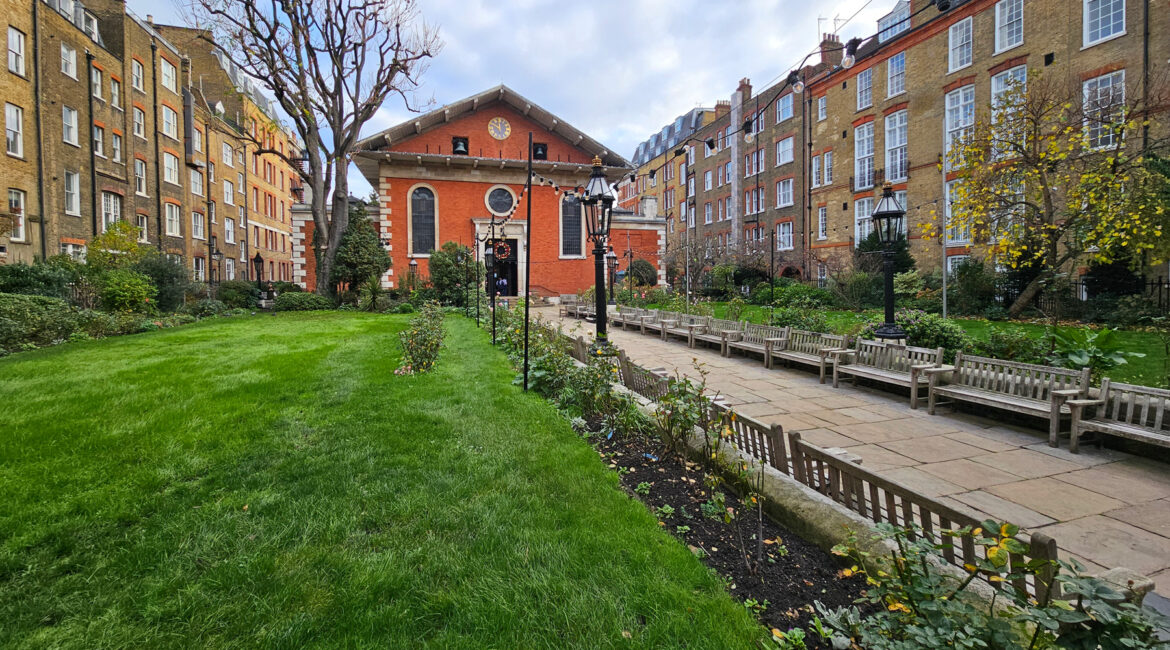
Comments are closed.